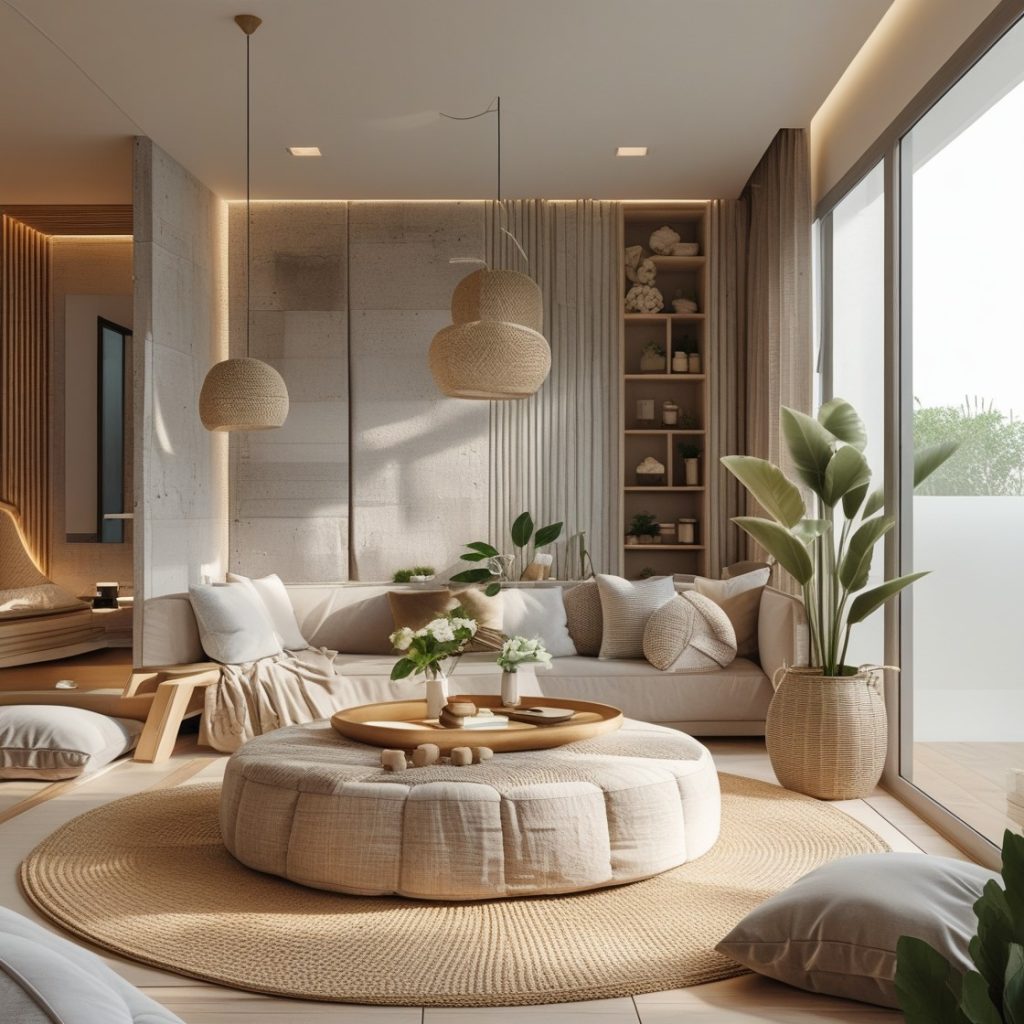In today’s fast-paced world, our homes and workspaces play a bigger role in our well-being than we often realize. Beyond just aesthetics, the design of a space can deeply influence our mental, emotional, and physical health. This is where wellness-focused design steps in — a thoughtful approach that goes beyond style, creating environments that support healthier, happier living. But what exactly is wellness-focused design, and why is it becoming a must-have in modern interiors? Let’s explore.
-
- What exactly is wellness-focused interiors?
Wellness-focused interior design is exactly what it sounds like — a design approach that prioritizes the well-being of the people who inhabit a space. While we often concentrate on aesthetics, we tend to overlook how interior environments can directly impact our health and immune system. By making a few thoughtful changes in your home or office, you can significantly enhance your quality of life.
Wellness-focused interiors not only support physical health but also play a crucial role in improving mental and emotional well-being. Do you have a sunroom, meditation zone, or even a small workout area at home? Many would say no, often blaming limited space — but wellness isn’t about size. Even compact spaces can be optimized to be both emotionally uplifting and physically healthy.
In essence, wellness interiors are designs that promote harmony across mind, body, and spirit. Their importance has surged since the COVID-19 pandemic, which transformed our homes into sanctuaries. It made us realize how much more healing and comforting our homes could be — and how they can be improved to handle future challenges more effectively.
-
- What does a wellness focused design provides?
If feeling connected to nature were a design style, it would certainly be wellness-focused design. These spaces emphasize natural elements, abundant daylight, and fresh air — all essential to our well-being. They aim to create a clutter-free flow that promotes calm and balance.
Cross-ventilation is prioritized to maintain fresh indoor air quality, reducing dependence on artificial ventilation. These interiors are not just visually appealing but feel lighter, freer, and more in tune with nature. The result? Improved mood, regulated sleep cycles, reduced stress, and greater mental clarity.
-
- How can you achieve it in your space?
Creating wellness-focused interiors is surprisingly simple and low-maintenance. These designs are timeless, prioritizing sustainable materials and mindful aesthetics. Start with earthy tones, low-VOC paints, natural textures, and organic elements like plants and water features.
Introduce greenery using easy-to-maintain air-purifying plants such as peace lilies, snake plants, or pothos. Large plants like fiddle leaf figs or indoor palms can fill empty corners and soften harsh angles.
Water elements such as small fountains, tabletop bowls, or wall-mounted waterfalls introduce a soothing sound and calming energy. Place these near entryways, meditation corners, or living areas — ideally in the north or northeast zones if you follow Vastu principles.
Remember, minimalism is key. Even one well-placed element can make a powerful difference — less is truly more.
-
- What to keep in mind while choosing wellness focused designs?
Every design choice contributes to the overall sense of well-being. Here are a few essentials to consider:
Clear Pathways: Ensure open movement and avoid clutter or obstacles to maintain a sense of flow and ease.
Cozy Corners: Create calming zones like reading nooks, meditation spaces, or quiet seating areas for personal downtime.
Acoustics: Use sound-absorbing materials to soften noise and foster a tranquil environment.
Natural Materials: Incorporate sustainable elements such as wood, stone, linen, or cotton to maintain a connection to nature while reducing environmental impact.
These thoughtful touches help create spaces that feel serene, grounded, and uplifting.
-
- How to integrate technology with wellness designs?
It’s a common misconception that wellness and sustainability exclude modern technology — in reality, the right tech can enhance wellness design significantly.
Smart air purifiers, for instance, monitor indoor air quality in real-time and adjust filtration accordingly, ensuring clean, breathable air. Circadian rhythm lighting systems mimic natural daylight patterns — bright and cool during the day to boost energy, and warm and dim at night to support relaxation and better sleep.Motorized blinds or curtains can be set to open at sunrise and close at sunset, enhancing your natural connection to daylight and supporting healthy sleep cycles.In wellness-focused interiors, technology doesn’t overwhelm — it supports. It works subtly in the background to make your environment healthier, calmer, and more in tune with your lifestyle.



